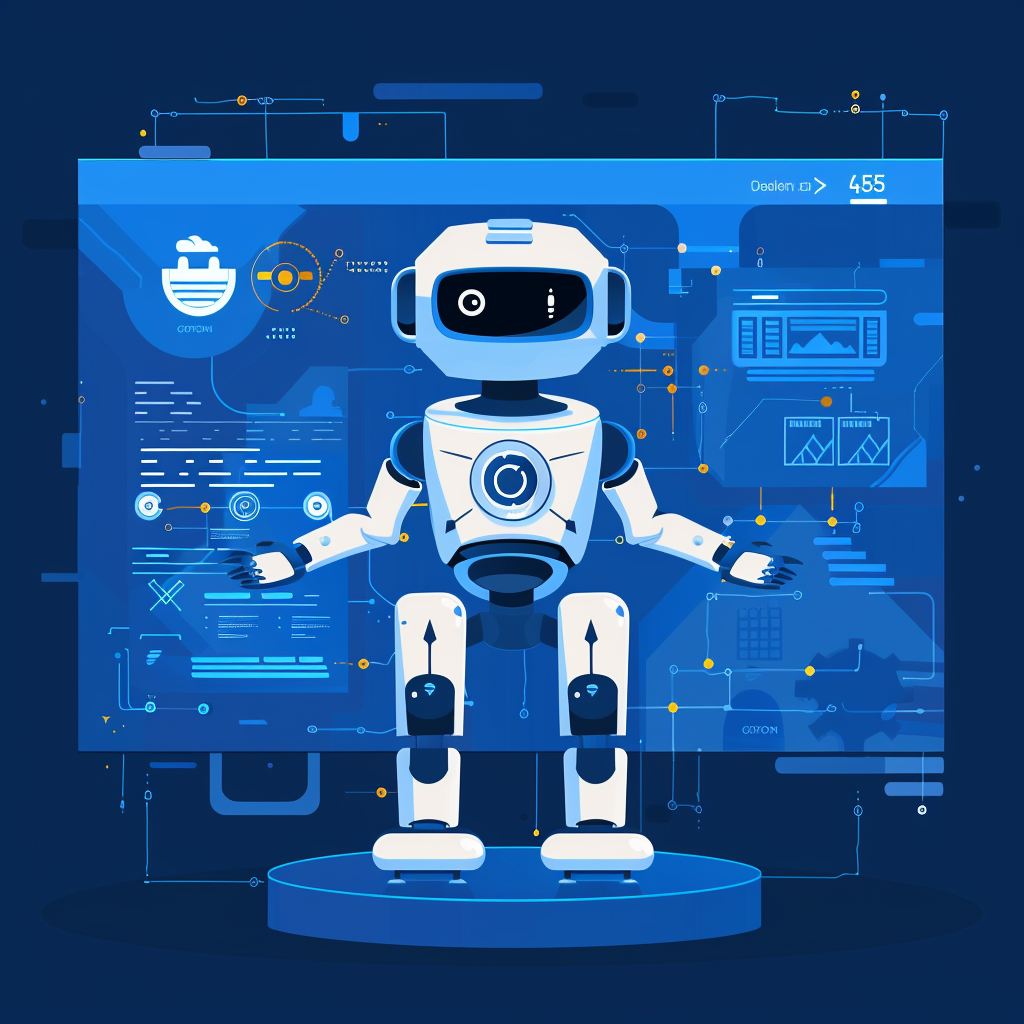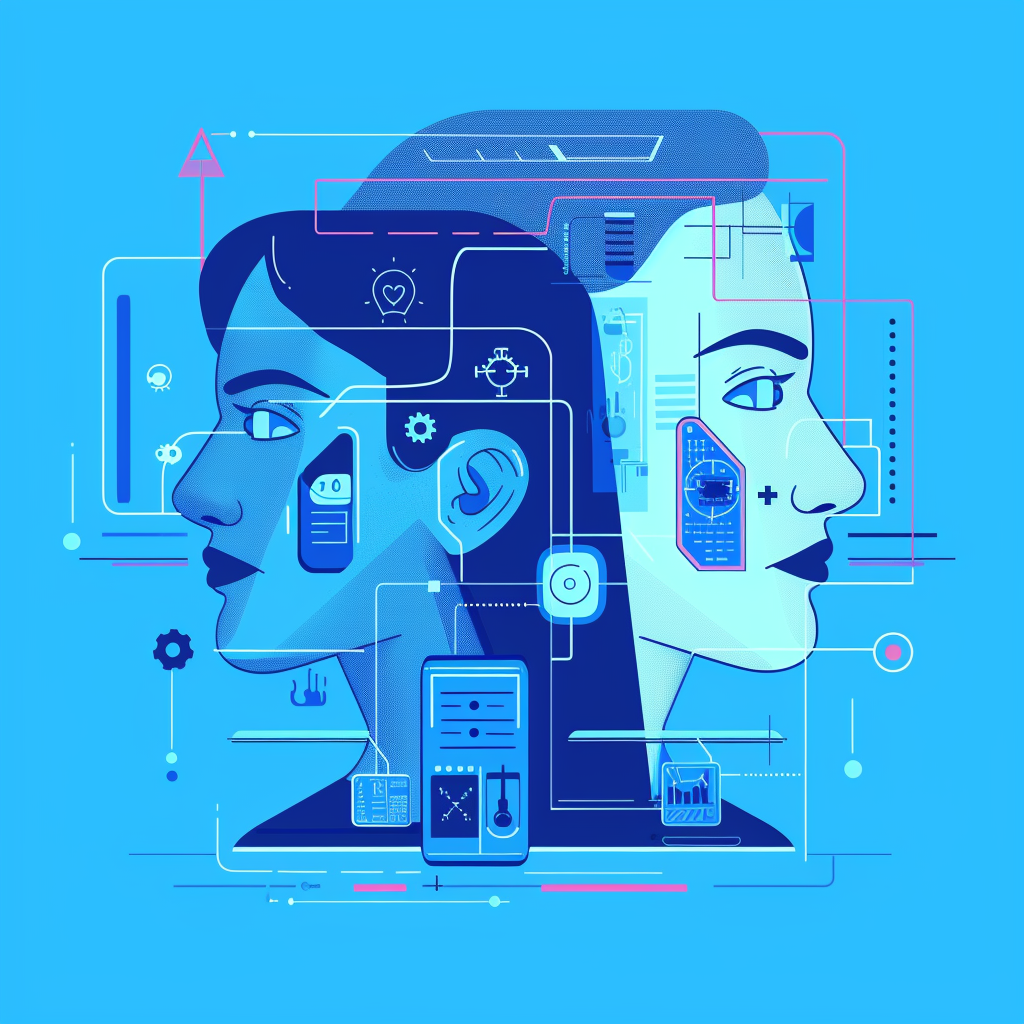Modern problems require modern solutions, which is very true for cyber attacks. In recent years, cybercriminals have had a field day with the amount of personal data on the Internet. Click on what seems like a trivial link in your inbox, and your personal information is already in the hands of the hackers. Your identity can now be faked and used for other malicious activities. And on the scale of big companies with large datasets, such fraudulent acts can wreak absolute havoc.
Traditional methods of detecting fraud do not work anymore — companies need something faster and more efficient, and there is no better solution than AI cybersecurity solutions. Security specialists agree — 88% of them believe that artificial intelligence will be an essential component of any effective security strategy in the coming years. And according to estimates, in the next five years, the value of artificial intelligence in the cybersecurity sector will grow by $8.3 billion. So what is it if not a sign to explore this field more profoundly?
This valuable article will uncover the role of artificial intelligence in cybersecurity, including its benefits, flaws, and practical applications.

Artificial Intelligence and Cybersecurity
Artificial intelligence is the subset of computer science that aims to imitate the human mind in how it performs tasks. By leveraging large datasets, AI-powered tools can analyze the information and spot common patterns or anomalies. It is an excellent asset for cybersecurity, where the most minor details or any unusual activity play a crucial role.
It is essential to note that AI cybersecurity won’t replace real humans, that is, security specialists. It is more of a complimentary instrument that can help to process a large amount of data and automate routine tasks. Natural language processing can help analyze language patterns, communication models, and writing styles to establish which are authentic or fake. Machine learning algorithms can assist specialists with identifying patterns and performing predictive analysis.
The Benefits of Artificial Intelligence in Cybersecurity
Integrating AI into cybersecurity is a game-changer in the fight against cybercrime. Businesses and organizations can enjoy faster and more intelligent threat detection, analysis, and response using AI cybersecurity solutions. Here is the outline of the key benefits of AI technologies:
- Process automation — Artificial intelligence can handle repetitive tasks in cybersecurity, such as vulnerability scanning, patch management, and network oversight. This allows cybersecurity experts to dedicate their time to more complicated challenges that require human insight.
- No human mistakes — It is easy to overlook minor details or make a typo with the human eye. Cybersecurity artificial intelligence can enhance accuracy and efficiency by automating mundane tasks in threat identification.
- Anomaly detection — AI cybersecurity technologies can understand typical patterns within a network or system and pinpoint anomalies that may indicate a cybersecurity risk. This is beneficial for identifying threats from within or complex, advanced attacks.
- Enhanced data analysis — In recent years, data has been multiplying rapidly, and manually dealing with such an amount would take a lot of time and effort. Artificial intelligence models can do it efficiently and error-free.
- Continuous learning — AI technologies are constantly evolving; the more patterns they encounter, the more sophisticated they become. Because of that, AI-powered security devices will respond much better to the most recent fraudulent schemes and hacker attacks.
- Predictive analysis — Artificial intelligence can forecast future dangers through machine learning by examining past events and ongoing patterns. This ability to predict allows companies to prepare themselves and react to possible cybersecurity threats proactively.
- Bot blocking — Bots are widely used by hackers who want to disrupt the regular traffic of websites, that is, to perform DDoS attacks. AI-powered technologies can successfully identify such imposters and combat them.
- User Behavior Analytics (UBA) — Artificial intelligence can examine patterns of user activity to identify possible security risks. For instance, a user’s unusual access to confidential information, which deviates from their regular activity, might suggest that their account has been breached.

Challenges of AI in Cybersecurity
Technology will always remain technology; it will lack human reasoning, emotions, and creative, out-of-the-box solutions. Artificial intelligence is no exception here — it has some weak points, which makes it a double-edged sword in cybersecurity. Let’s look at some challenges that might appear when implementing AI cybersecurity technologies:
- Bias — AI cybersecurity technologies can be biased if the data they process is discriminatory. This issue is challenging to eliminate — no company can provide 100% accurate and bias-free information for teaching algorithms. Hence, decision-making mistakes. For example, AI cybersecurity technologies can draw a wrong conclusion regarding face recognition based on information about different ethnic groups. This ability of artificial intelligence technologies can also raise some ethical concerns.
- Privacy concerns — AI cybersecurity technologies can become victims of security breaches, as AI algorithms need to analyze data for decision-making. The datasets might include sensitive and private customer information; therefore, they can be used maliciously in case of leakage.
- Cost concerns — Implementing AI cybersecurity technologies can be quite demanding, as it requires cutting-edge hardware and specialized professionals who are well-versed in the field. These requirements can put a strain on resources, both in terms of finances and time.
Artificial intelligence can fight cybercrimes, but because it is accessible to all, cybercriminals can use it to create even more sophisticated crime schemes. Here are some instances of how fraudsters can take advantage of AI cybersecurity technologies:
- Deepfakes — With the help of artificial intelligence, scammers can produce fake audio and video content that is hard to distinguish from the real. Have you ever seen a video of a famous politician or a pop star saying some controversial things? That is deepfake in action. In a way, it became a subset of artificial intelligence. The word “deepfake” consists of two parts: “deep learning” and “fake.” Cybercriminals use such a format to spread panic and chaos or broadcast propaganda.
- Data poisoning — In this case, cybercriminals target machine learning algorithms and datasets on which they are trained. They might insert incorrect data, which leads to false or biased output. Another way to manipulate AI algorithms is to perform backdoor attacks — to introduce a trigger in the training sets that would force artificial intelligence to act in a certain way and then grant access to the system.
- Password hacking — With machine learning algorithms, hackers can automate the process of password cracking. The threat is real — 51% of common passwords can be breached by PassGen AI, the random password generator, in less than a minute.
- Social engineering attacks — These attacks comprise 98% of all cyber attacks worldwide, and with AI implemented, they might become more effective. Artificial intelligence technologies can analyze users’ information on social media and generate phishing emails or messages that look authentic to deceive people and make them give away sensitive information. AI-powered bots can act as real people and, again, make users let their guard down.

How Can Generative AI Be Used in Cybersecurity
Generative AI refers to the ability of artificial intelligence to produce content, whether it is text, audio, or video, based on what it has learned from existing examples and patterns. In cybersecurity, generative AI has a lot of potential, so here are five use cases:
Use case 1: Threat and anomaly detection.
AI algorithms, particularly those utilizing machine learning, excel in recognizing complex patterns within data. They can identify subtle abnormalities that might elude traditional detection methods or human examination. AI can analyze and process large amounts of data, which makes it ideally suited for detecting anomalies in real time within large IT environments.
Use case 2: Cyber attack simulations.
Generative AI can create realistic scenarios of cyberattacks, including phishing attacks and sophisticated malware. Following each simulation, artificial intelligence can evaluate the effectiveness of the organization’s reaction, pinpointing strategies that worked well and highlighting those that require enhancement. AI also uses this experience to learn and modify future simulations accordingly.
Use case 3: Automation of security updates and patch management.
AI-powered technologies can track the latest updates in security systems, decide what to download and install, and ensure that this process is smooth. Artificial intelligence can also schedule a time for a patch deployment by choosing a low-usage time, thereby reducing interruptions. After deployment, AI can oversee systems to identify any unexpected consequences or malfunctions resulting from the upgrade.
Use case 4: Staff training on cybersecurity.
Training personnel is essential for companies to ensure that employees can see potential threats in the system and take adequate measures to fight them off. AI can provide comprehensive learning guidelines, which include regular updates on new threats, reminders of best practices, and insights into the consequences of security breaches. The training might also involve practical exercises like mock phishing emails to test employees’ responses.
Use Case 5: Incident response.
AI is capable of categorizing incidents by their type and level of urgency. This enables prioritizing actions, making sure that the most serious matters are dealt with promptly. AI is also utilized in active threat detection to pinpoint potential dangers before they activate standard security measures. This forward-thinking strategy improves general security.
Major companies have already incorporated AI cybersecurity solutions into their workflow. Among them are:
- Financial institutions like JPMorgan Chase, HSBC, and Goldman Sachs use AI-powered technologies to detect fraud and observe potentially dubious actions. They handle confidential information about their customers, so robust security is necessary.
- Tech giants like Microsoft, Google, and Apple implement AI cybersecurity systems to improve the security of their products and defend themselves against cyber threats such as phishing and malware.
- Healthcare institutions, like Pfizer and Mayo Clinic, use AI cybersecurity technologies to safeguard patient information and healthcare innovations and treatment. With the stringent laws surrounding patient data privacy, ensuring that sensitive information is protected against unauthorized access or breaches has become more critical than ever.
- Major retail corporations, such as Amazon and Walmart, use AI cybersecurity solutions to ensure the safety of online transactions, protect consumer information, and oversee their network landscapes for any signs of cybersecurity risks. It is particularly crucial due to the large number of e-commerce transactions they manage.
AI Cybersecurity Solutions
Now that you are familiar with the most common use cases of AI in cybersecurity, it is time to see what tools you can take advantage of. Here are some of them:
- Vectra is a tool that combines artificial intelligence, machine learning, data science, and human touch. Vectra is designed to detect and analyze security threats and effectively combat them.
- Darktrace is an AI-powered tool that can be applied to any company, whether small or huge: it will work effectively on any scale. It requires minimal human intervention and is compatible with many security infrastructures and cloud providers, like Google Cloud Platform and Microsoft Azure.
- Ironscales Phishing Simulation Testing helps with personnel training, offering various simulations and personalized testing campaigns. With this tool onboard, employees will be prepared for any sophisticated cyber-attack.
- VirusTotal Code Insight is a generative AI tool based on Sec-PaLM (LLM). It is programmed to analyze potentially malicious coding scripts and uses NLP to make the codes’ summaries easy for specialists to understand.
Wrapping up
Implementing artificial intelligence is paramount for companies to defend against and respond to cybersecurity threats more efficiently and effectively. Cybersecurity AI provides unprecedented benefits — it can learn from previous experiences and, therefore, enhance its performance; it can predict potential threats and offer the most optimal solutions for their elimination. As cybercriminals become more AI-savvy, there is no other way but to use their weapon against them to stay ahead of the game and keep data secure.
If you find the fields of AI and cybersecurity interesting, then check out LITSLINK’s expertise. Our specialists know their way around artificial intelligence and provide the finest services, so do not hesitate to contact us and get the best experience!




